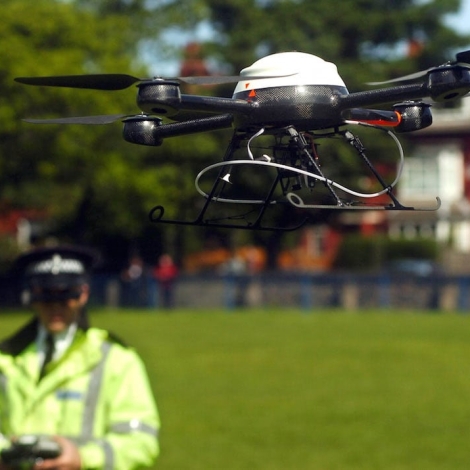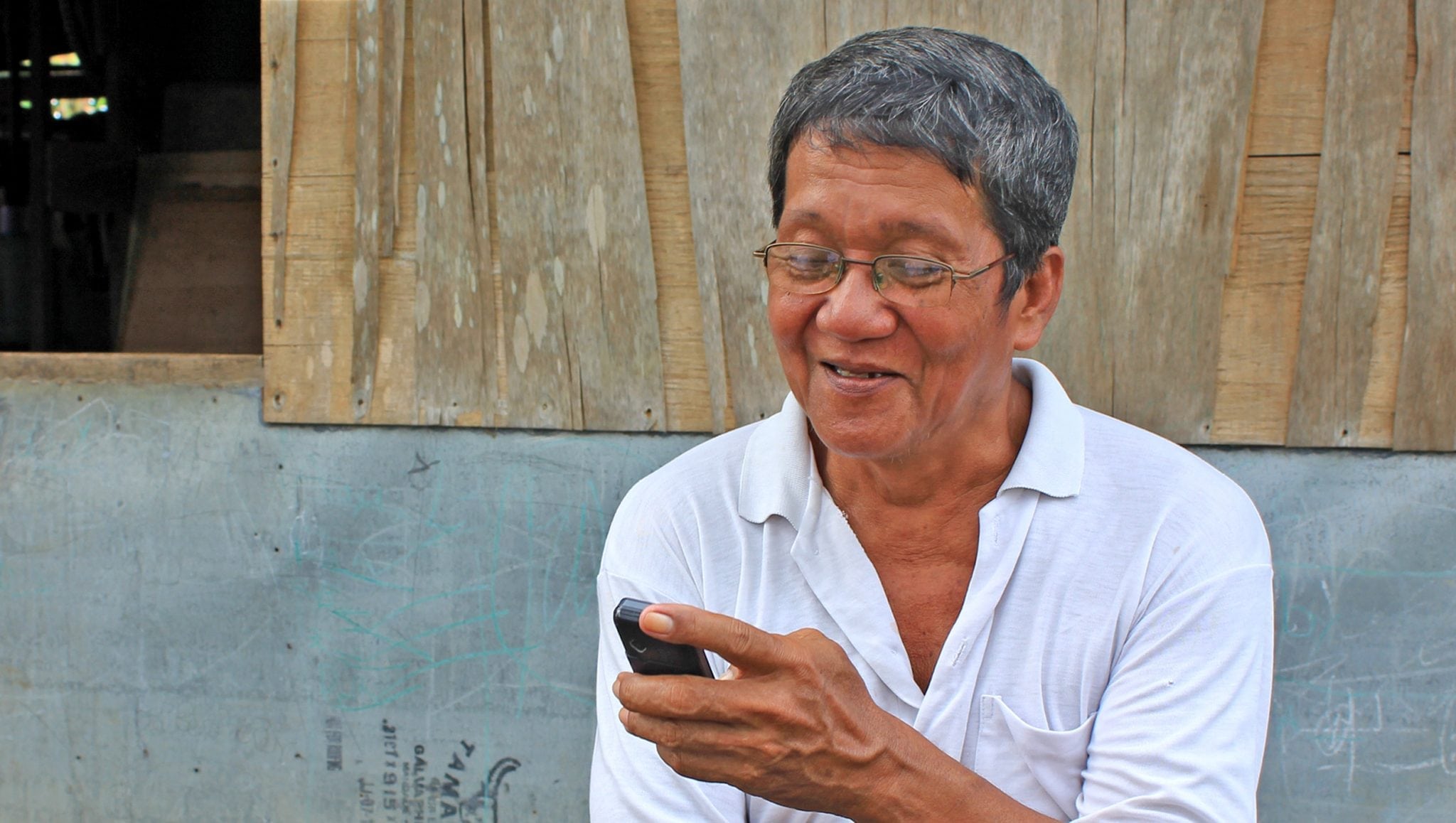Carrying just a single camera, surveillance drones have a light payload, but they also have to lug around a terrible reputation. Picture one and you might see an Orwellian police state or Skynet’s killer robots. But from a strictly mechanical point of view, surveillance drones are flying cameras that could settle arguments in conflict zones.
As a class, drones suffer from a split personality. At the same time that drones are proliferating on the battlefield, their smaller, peaceful cousins have taken up humanitarian work. Patrick Meier has neatly outlined the uses of unmanned aerial vehicles in search-and-rescue missions and relief after natural disasters in his E4C Webinar, Humanitarians in the Sky.
Surveillance drones can play a role in monitoring for human rights abuses. In Ferguson, Missouri, aerial videos of altercations between police and protesters could answer questions about who did what and who started it. Likewise, in the rebuilding of the Gaza Strip, or on the borders of Ukraine, in Syria and other hot spots worldwide, eyes in the sky could keep tabs on human rights abuse.
The cost of these drones is low enough that human rights organizations and even private citizens can buy them. Mounted with a GoPro or a digital SLR, the drones can capture photos and video during flights of 30 minutes to an hour or longer before they need a recharge. Depending on the camera and the altitude, the images can show far-away views of vehicles and crowds or detailed views of guns, uniforms and even faces.
Should you use a surveillance drone?
It’s a controversy, so to support your decision here are some expert views. Andrew Sniderman and Mark Hanis, who co-founded the Genocide Intervention Network, argue in the New York Times that drones should be a part of human rights monitoring. Some critics disagree, and Meier weighs in on iRevolution, the news site that he founded.
“In my mind, it is inevitable that human rights groups will adopt this technology in one form or another,” Meier told E4C.
Your decision should take the law into consideration and you should be prepared for the consequences of breaking it. The United States is developing regulations for unmanned aerial vehicles, and launching drones in Syria and other nations at war could be an invasion of sovereign air space.
But if you have decided that it’s a good idea, then here is where to start researching the hardware.
Meier and UAViators, the Humanitarian UAV Network, have compiled a comprehensive review of UAVs. They include 26 features, including the price, size, flight time, carrying capacity, transmitter range and others. Besides the UAVs themselves, linked spreadsheets also compare cameras, payload mechanisms and software. It’s a large and thorough compilation.
DRONELIFE.com has built a product filter that sorts commercially available drones by seven features, including cost, battery life, application and others. This tool has an easy-to-use interface and photos.
What to look for in a surveillance drone
Andrew Amato, DRONELIFE’s editor in chief, says that a good surveillance drone will cost at least $1000. This is Amato’s advice to human rights organizations.
“Models like the DJI Phantom, 3D Robotics Iris and Blade 350 QX2 AP are good machines for quick flights and smooth video. And they have autonomous capabilities and can be configured to output real-time, first person view video footage. But they require someone to be holding a remote control at all times and actionable data for surveillance purposes is limited. It depends on what your end goal is, but 30-ish minutes of flight time and HD video can only get you so far.”
“The Lehmann LA100 might be the best bet for the $1000 price point, but it still only has a GoPro for a camera.
“The next steps up are going to be the Draganflyers and eBees of the world but as you outfit those models with appropriate cameras and sensors (infrared, thermal, night vision, 3D mapping, etc.) you will quickly find your price tag going up to 10, 15, $20,000 and more.”
Another expert we consulted wished to remain anonymous because of the sensitive nature of discussing action in conflict zones. Here is this expert’s advice:
The surveillance drone’s main features should be that it is cheap and expendable, small enough to be hard to see, quiet, that it looks like a bird at higher altitudes (like the eBee), it should have a long-range, be fully programmed and autonomous with a live data link so you can start recording right away and not have to wait for the vehicle to come back to download image files, which will help if the UAV is shot down.
Can’t afford to buy a drone? Try this…
If a drone is out of your organization’s budget, try making your case to the manufacturers.
“In my opinion, it seems the best way for an NGO to get their hands on a drone would be to find a manufacturer who is looking to do a field test. Companies like Airware, Matternet, EYE Remote Solutions are anxious to work with governments and organizations in third world countries to show their hardware works as a solution to real world problems (poaching, medicine delivery etc). And there is no shortage of companies in this space,” Amato says.
Safety first!
You now have the tools to make a good shopping decision, but we’d like to leave you with Meier’s words for the wise: Remember to think about safety first and Do No Harm.

